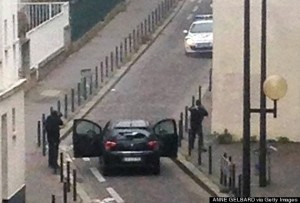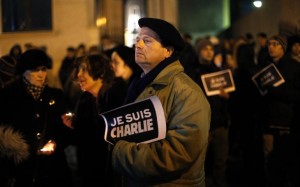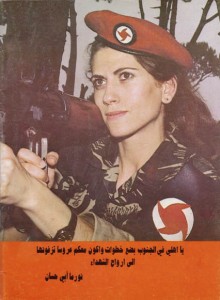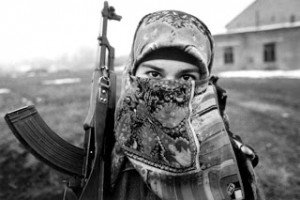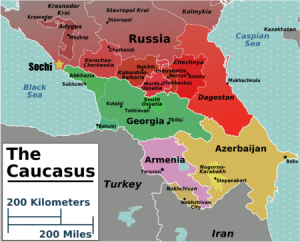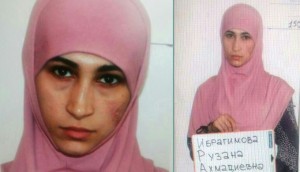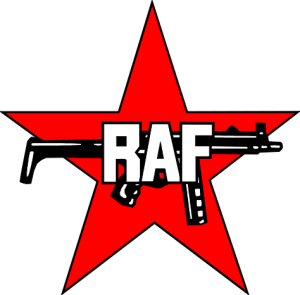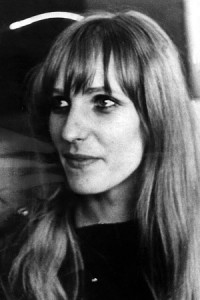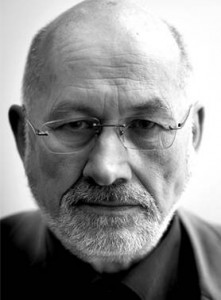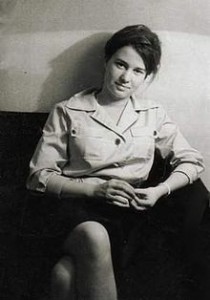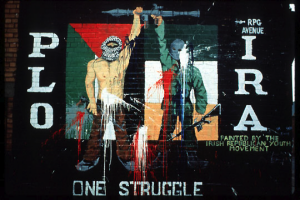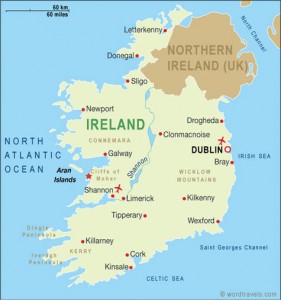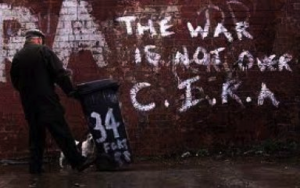Spain and the ETA
Historical Development, Cultural and Political
Contexts
The nation of Spain as we know it was formed in 1492 and has “three major peripheral ethnic groups with some claim to an [sic] historical existence preceding that of the Spanish state itself. In descending order of size, they are the Catalans, the Galicians, and the Basques.”[1] The official language of Spain is Castilian Spanish though in some regions Galician and Euskadi are spoken along with Catalan, Valencian, and Basque.[2] Spain was a major player in colonialism especially in the Americas. Its wealth amassed from gold and silver stolen from its conquered lands helped to solidify Spain as one of the most powerful empires in Europe during the sixteenth and seventeenth centuries. Spain has a history of violence most notably the Spanish Inquisition where many innocent victims were tortured and executed as being heretics, and the more modern (1930s) Red Terror where thousands of Catholic clergy and other citizens were killed by the Republican forces during the Spanish Civil War.
As we learned in the video, “ETA: A History of Basque Nationalist Terrorism,” the Basque’s ancestral homeland stretches inland from the Bay of Biscay and includes the provinces of Vizcaya, Guipuzcoa, Navarra and Alava along with the French provinces of Labourd, Basse Navarre, and Soule. It’s combined population is around two and a half million people with the majority (85%) living in the Spanish provinces.[3] No one knows the true origins of the Basque people. They have lived in this area of Spain and France since before the Roman conquest of Europe. They have their own language and culture which bears little resemblance to the surrounding Spanish and French cultures. After having survived “invasion attempts from Romans to Moors,” they became spoils of war whenGeneral Francisco Franco won the Spanish Civil War in 1939.
The Basques were divided during the Civil War, with the provinces of Alava and Navarra siding with Franco’s Nationalists while the provinces of Guipuzcoa and Vizcaya supported the Republicans. The Republican’s were those who were loyal to the current Republican government while the Nationalists leaned towards fascism. After Franco won the war and became dictator he took revenge on the Basque provinces who had declared their independence during the Civil War while at the same time giving limited autonomy to the provinces who had supported him. Franco’s revenge was swift and brutal. He had thousands of Basques killed and/or executed and imprisoned many more. The Basque language was a crucial component of their culture. He cracked down by making it illegal to speak their own language in public; being caught meant time spent in jail. Books wrote in the Basque language were burned, and even tombstones with Basque inscriptions were destroyed.[4] He wanted no sign left of the Basque language.
The ETA (Euskadi Ta Askatasuna): Values, Obligations, and Consequences
The ETA (Euskadi Ta Askatasuna) which translates Basque Homeland and Liberty in the Basque language was among the earliest terrorist groups in Europe and one of Spain’s most brutal terrorist organizations. This leftist terrorist group has been around for more than fifty years. It’s origins date back to 1894 when the Basque Nationalist Party was formed. During the reign of General Francisco Franco they were forced to take refuge in France with their main headquarters being in Paris.[5] Frustrated with the slow political process that saw few results, in 1959, young revolutionary idealists from this group broke away and formed the ETA with the purpose of forcing an independent Basque homeland separate from Spain.
Spain resisted this movement to form an independent Basque state and, by 1968, ETA developed into one of the most feared terrorist organizations in Europe targeting many of Spain’s government officials. By the time it was all said and done, ETA was responsible for over 800 deaths and 1,600 terrorist attacks.[6] Some sources contradict these figures stating that at one time “ETA killed more than 100 people a year.”[7] Their most famous political assassination occurred on December 20, 1973 when Spanish Prime Minister and favored successor to General Franco, Admiral Luis Carrero Blanco, was killed in a car bomb attack. Though ETA predominately targeted government officials, civilians frequently became collateral damage. The ETA would usually phone in warnings of their impending attacks, but unfortunately on many occasions there just wasn’t enough time to get the people out. Towards the end of their terror their favorite targets became tourist attractions and “according to a report from the newspaper El País, attacks by ETA cost the Spanish government nearly $11 billion from 1994 to 2003.”[8]
In 2008, through increased counter intelligence, the Spanish government was been able to target and capture most of ETA’s senior leadership. By 2010, the world community stepped in when the Brussels Declaration was proposed by “twenty-one international leaders in peace processes and conflict resolution, including several Nobel Prize winners.”[9] The purpose of the Brussels Declaration was to open the door to negotiations between Spain and the ETA. By 2011, the ETA had called a “permanent unilateral ceasefire”[10]calling for “the definitive cessation of its armed activity” and opening “a process of direct dialogue [with the Spanish government to address] the resolution of the consequences of the conflict and, thus, to overcome the armed confrontation.”[11]
Global Peace Index and Cronin’s Endings
In 2014, Spain can be found ranked number twenty-six on the Global Peace Index. The Global Peace Index was created in 2007 and “measures peace in 162 countries according to 22 indicators that gauge the absence of violence or the fear of violence.”[12]The demise of the ETA contains some excellent examples of Cronin’s endings. When the leaders were captured (decapitation), internal disintegration soon developed which allowed the doors to be opened for negotiation. Though they were not successful in forcing a separate Basque state, they were successful in negotiating for Basque representation in the Spanish government allowing them to save face with their supporters.
.
[1] http://countrystudies.us/spain/35.htm
[2] https://www.google.com/webhp?sourceid=chrome-instant&ion=1&espv=2&ie=UTF-8#q=languages%20of%20spain
[3] Video: ETA: A History of Basque Nationalist Terrorism[4]http://www.mtholyoke.edu/~sedla21l/classweb/index2.html
[5] http://www.britannica.com/EBchecked/topic/193771/ETA
[6] http://www.cfr.org/separatist-terrorism/basque-fatherland-liberty-eta-spain-separatists-euskadi-ta-askatasuna/p9271#p7
[7] http://www.theguardian.com/world/2008/dec/14/spain-eta-basque-separatist
[8] http://www.cfr.org/separatist-terrorism/basque-fatherland-liberty-eta-spain-separatists-euskadi-ta-askatasuna/p9271#p7
[9] http://icgbasque.org/history/
[10] http://www.theguardian.com/world/2014/feb/21/basque-separatist-eta-disarmament
[11] http://www.theguardian.com/world/2011/oct/20/basque-ceasefire-statement-full-text
[12] http://www.visionofhumanity.org/#/page/our-gpi-findings
France
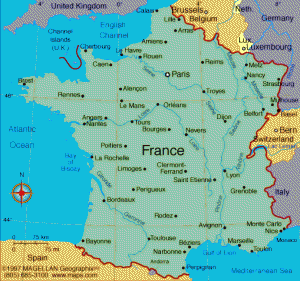
History and Background of France
- The second largest country by area in continental Europe, after Ukraine
- It is bordered by Belgium, Luxembourg, Germany, Switzerland, Italy, Monaco, Andorra, and Spain
- Paris is the largest city
- France has the 5th largest population in Europe at 63 million
- Its citizens get free healthcare and education
- French is the official language
- France is #46 on the Global Peace Index
- Major trading partners are: Germany, Spain, UK, Italy, Belgium, U.S., and Netherlands
- About 84% of the population are Roman Catholic, 8% Muslim, 2% Protestant, 1% Jewish, and 5% unaffiliated
Governance and Political Structure
The current government of France was established in the Constitution of the Fifth Republic in 1958, and Charles de Gaulle because the first President. All members of the government are nominated by the President on the advice of the Prime Minister. The Prime Minister is the head of government and he is nominated by the President. The President is allowed to nominate whomever he wants; however, he should nominate a candidate that reflects the will of the National Assembly. The current President is Francois Hollande who took office in 2012.
Culture of France
France has had many turbulent historical events that have shaped their culture. France has multiple ethnicities and regional diversities. France has a large immigrant population, close to 5 million, that brings many other languages which adds to their ethnic diversity. Their French Muslim population is estimated to be the largest in Western Europe- French Muslim School children are prohibited from wearing their headscarves at school which has caused them great controversy. Social class is important as well as cuisine, dialect and language, and tradition. France is very proud of their independence and culture. Today, France is one of the most modern countries in the world. The people in France prefer to be spoken to in French. This, I definitely found out when I visited there a few years ago. My experience was that the people, especially in the restaurants, did not appreciate it if you could not speak at least a little bit of French. With France being one of the most popular tourist places in the world, they probably get tired of foreigners. French culture places a high priority on the enjoyment of food. French cuisine was codified in the 20th century. There are many dishes that have become both regional and national. This makes me think about “French Toast”. France is also the birthplace of cinema.
Economy and Globalization
In recent years, France’s economy has grown more slowly than many other developed countries in the world. There are laws protecting workers and there is high public spending on public health and welfare. Strict employment laws with the tax burden can make is difficult for businesses to compete in a globalized economy.
Terrorism in France
Terrorist violence in France has a long history. In the “Decade of the Regicide” between 1892 and 1901 former President William McKinley, the most high profile victim of this violence, was assassinated in 1901. Civilians were also killed in these attacks. In February 1894 Emily Henry, a French anarchist, threw a bomb into a Parisian restaurant and fled. He was furious over the attack of another anarchist and saw this as a way to get back. This attack killed one person and injured twenty. He was later executed. In 1937, La Cogoule, officially called the Comite’ secret d’action revolutionnaire (Secret Committee of Revolutionnary Action), was exposed by the French authorities. This group emerged from the extreme right-winged politics of the decade. The group assassinated several prominent Italian anti-fascists and used violence to promote its activities from 1935-1937. In 1948 the government tried the surviving members. In the 1950’s there was the FLN which started up as a result of the civil conflict in Algeria. Members of this group were either killed or arrested and the terror attacks were stopped. During the 1970s and 1980s there were groups such as Action Directe who committed violent attacks. In the 1990s there was an Islamist group, The Armed Islamic Group (GIA) who committed attacks on French territory. This group was responsible for the hijacking of a plane on Christmas Day in 1994 and the bombing of metro stations in Paris which killed 8 people.
January 2015 – Charlie Hebdo Terrorist Attack
This terror attack happened in January of 2015. The attack was on a French magazine in Paris called Charlie Hebdo. This was the worst terror attack in France in half a century. Charlie Hebdo is the country’s most famous satirical magazine. Masked gunmen stormed into their office yelling “Allahu Akbar” as they shot and killed 12 people and wounded others. The magazine was targeted because it promoted its right to offend: specifically to offend Muslims. The two brothers who attacked the magazine were later killed by police. This was not the first time the company had been hit: In 2006 as a result of printing inflammatory cartoons of the Prophet Muhammad. Also in 2011 the offices were attacked with firebombs after publishing an issue that said it was to be guest edited by the Prophet. These previous attacks did not deter the magazine from printing these things.
After the Charlie Hebdo attacks in Paris some have questioned the role that immigration played in bringing radical Islam to France. However, the men who launched these attacks in the name of Islam were French citizens. They were born and educated in France. Experts say that France’s economy will not suffer and that the economic impact on terror is not as concerning as the impact on our freedoms and safety.
April 22, 2015- Recent Attempt to Attack a Church in Paris
An Islamic extremist accidently shot himself in the leg and then called for an ambulance. When authorities arrived they found loaded guns, in his car, and notes about potential targets. When they searched his apartment they found more weapons including assault rifles. Authorities believe he was communicating with someone in Syria. There was also material found in his apartment that mentioned al-Qaida and the Islamic State group, but there was no evidence that the suspect had any direct ties to any organized terrorist groups.
Works Cited:
http://www.huffingtonpost.com/2015/01/07/charlie-hebdo-attack_n_6429058.html
http://en.wikipedia.org/wiki/Government_of_France
http://www.everyculture.com/Cr-Ga/France.html
http://www.understandfrance.org/French/Issues.html
http://www.historytoday.com/chris-millington/terrorism-france
http://www.ibtimes.com/charlie-hebdo-attack-frances-economy-wont-suffer-experts-say-1779006
http://www.heritage.org/index/pdf/2015/countries/france.pdf
Russia
152 out of 162
3.039 Global Peace Index Score
Brides of Allah & Black Widows
What do a 28-year old nurse, a 69-year old former student of history, a teacher, a public speaker and mother of two, and a 41-year old with a Ph.D. in Neuroscience and mother of three have in common? Incredibly, they are all (or were) members of terrorist organizations. I have always associated suicide bombers, and terrorists for that matter, as being predominantly male, and they still are; however, I am, nonetheless, astounded by the number of female suicide bombers, the number of women associated with terrorism, and the fact that there is an all-female terrorist organization, The Black Widows.
In a fascinating 2009 study on female suicide terrorists by Lindsey A. O’Rourke, a political science Doctoral student at the University of Chicago (at the time of her study), observed that the number of individual female terrorists had risen from eight to over 100 [13]. Between 1981 and 2008, attacks by female suicide terrorists had taken place in Afghanistan, India, Iraq, Israel, Sri Lanka, Turkey, and Uzbekistan. The earliest known suicide attack by a female suicide bomber was in 1985 when 16-year old (and pregnant) Sana’a Mehaidli, a member of the Syrian Social Nationalist Party, blew herself and a Peugeot filled with explosives, killing two Israeli soldiers and injuring 12 more. Her final wish was to be immortalized as ‘The Bride of the South.’
In all, as of between 1981 and 2007, 17-terrorism suicide campaigns, both secular and religious, have employed female suicide terrorists. Presently, there are at least 10-terrorism suicide campaigns that still employ female suicide terrorists. This does not include the terrorist groups that employ women who are members in some other capacity (e.g., field operatives, financial fixers, etc.). That number is significantly greater.
According to O’Rourke’s study, the combined average number of casualties per female suicide bomber for four terrorist groups including, Lebanese, Kurdistan Workers’ Party (PKK), Liberation Tigers of Tamil Eelam (LTTE), and Palestinian, is 20.1 compared to 20.9 for Chechen groups [13]. Why is this? One reason that might explain this is that there is only one group that is all female: The Black Widows, based out of Chechnya, Russia.
The Black Widows have been active since June of 2000 when the first Chechen female suicide bomber, Khava Barayeva, drove a truck filled with explosives into the temporary headquarters of an elite Russian Special Forces detachment in Chechnya. The attack resulted in two people dead and five injured.
In 2006, Anne Speckhard and Khapta Akhmedova of the Jaffee Center for Strategic Studies in Tel Aviv, Israel, published their study on Chechen female suicide terrorists and found that, between 2000 and 2005, 81 percent of the suicide attacks were performed by females [5]. The attacks took place in Chechnya and neighboring, Russia, North Osetia, Ingushetia, and included two airplane bombings which killed all passengers on board.
The most notable attack was the Beslan school massacre in North Osetia where Roza Nogaeva and Mariam Tuburova, along with 30 male suicide bombers, held 1,120 hostages, killing 330, and injuring 470 more. All 32 suicide bombers were killed.

Of the twenty-six female members of The Black Widow terrorist group whom Speckhard and Akhmedova conducted specific psychological interviews, the ages ranged from 15 to 38; thirteen were single, three were married, four were divorced, five were widowed, and one had remarried; seventeen had completed high school, five had finished their university studies, three were currently studying in college, and one had finished college; as far as economic status, only two were considered poor, fourteen were considered middle, nine were considered good, and one was considered high; twenty were secular Muslims and four were traditionally religious; as far as their relation to Wahhabism, nineteen connected after traumas and seven connected through family. All of the females interviewed experienced one or more forms of trauma (e.g., more than one family member was killed, father or mother was killed, brother was killed, husband was killed, family members arrested or disappeared after arrest, and general societal traumas) [5]. The Black Widows were originally comprised of women who had lost their husbands in the Chechen wars against Russia and they will undoubtedly continue to gain recruits as the number of widowed Chechen women grows commensurate to the deaths of their rebel Chechen fighter husbands.
Many terrorist organizations around the world are noticing the benefits of recruiting females as suicide bombers and unfortunately, their numbers are certain to rise, as well.
A friend of mine from high school is currently serving with the U.S. Army. He has spent the past twenty-five years in law enforcement and has had five tours to Bosnia, Iraq, and Afghanistan, where he is currently stationed. When asked about his view of female terrorists, he shared with me that females are more cold and calculating than males. Once their mind is made up, the female is more likely to carry out her task and with less emotion than a male. As a rule, females are seen as less dangerous. This allows them access to secure areas easier than a male. Females need less, and different, motivation than males. Their motivation will be different and in some aspects, emotional; however, this emotional motivation will not be the chest-beating and flag-waving motivation needed by males. He added that when he lived overseas in the ‘70s, there were a number of successful female terrorists who earned a living by hijacking airplanes. He said that in times of stress, many of these females stayed on focus with the original mission. The males were often the first to fold to stress and start to seek a way out [7]. His reflection is in line with the studies and stories that I have read throughout my research.
The 2014 Winter Olympics, held in Sochi, Russia, was only a stone’s throw away from Chechnya. Officials in Moscow regard The Black Widows as an active threat to peace and security in the region, which resulted in extra precautionary measures in securing and protecting the event, its athletes, and visitors.
Germany
17 out of 162
1.423 Global Peace Index Score
Given Germany’s reputative past involving heinous acts against humanity, terrorism, and extremism, it is quite surprising that they presently sit at 17 out of 162 on the Global Peace Index. This is largely due to the formation of the Grenzschutzgruppe 9 (Border Guard Group 9), more commonly known as the GSG 9. The group was officially formed in 1973. The GSG 9 has an impressive record. The group is deployed in cases of hostage-taking, kidnapping, terrorism, and extortion and is also called upon to secure locations, neutralize targets, track-down fugitives and, on occasion, to conduct sniper operations. Touted as “the best anti-terrorist group in the world” by the Commander of the Israeli Border Patrol, Tzvi War, they are very active in developing and testing methods and tactics and their advice is highly sought after, both domestically and internationally. Since their inception, they have reportedly carried out over 1,500 missions. Interestingly, they have only fired five shots since 1972: Mogadishu in 1977, Bad Kleinen in 1993, Aachen in 1999, and two additional missions where firearms were used to shoot at dogs of the persons being arrested.
Impressively, the GSG 9, competing against 17 other teams, won eight out of eight events at the 2005 SWAT World Challenge. They defended their title in 2006 and placed 5th in 2007. (An interesting side note about this competition: San Antonio, Texas won the first ever SWAT World Challenge in 2004).
There is one specific event that led to the formation of the GSG 9. A few of us (or our parents) may remember watching the Summer Olympic Games, held in Munich, Germany, on television. I was nine and a half years old, on September 5, 1972, when my parents ushered me away from – as they remained glued to – our television. I was too young to fully understand who was behind this massacre, or why, but I could understand that they were harming and killing innocent athletes and coaches.
Germany was completely caught off guard as the Palestinian terrorist movement, Black September, infiltrated the Games, killing eleven Israeli athletes and coaches, and one West German police officer.
TheRote Armee Fraktion (Red Army Fraction or RAF), earlier known as the Baader-Meinhof Group or Gang, was a West German far-left militant group, founded in 1970. The group’s motive was armed resistance and proletarian revolution and their ideology stemmed from Marxism-Leninism, Maoism, Third Worldism, and Anti-fascism. The West German government considered the RAF to be a terrorist organization. Interestingly, females comprised about fifty-percent of the RAF membership and about eighty-percent of the RAF’s supporters. The group is a good example of a generational terrorist organization. The “first generation” included Andreas Baader (1943-1977), Gudrun Ensslin (1940-1977), Horst Mahler (1936 – Living), and Ulrike Meinhof (1934-1976).
The “second generation,” which operated in the mid- to late-1970s included several former members of the Socialist Patients’ Collective. The “third generation” existed in the 1980s and 1990s. Of the three generations, the first generation is the most well-known. In 1968, Andreas Baader and his girlfriend, Gudrun Ensslin, in protest to what they regarded as the public’s indifference to the genocide in Vietnam, bombed a department store in Frankfurt am Mein. Though there were no deaths, the bombing caused extensive damage and the two were later convicted for the arson bombing. Following their sentencing in 1969, the two fled and were smuggled out of West Germany by sympathizers. In 1970, Baader was stopped for speeding and produced a fake driver’s license in the name of a famous writer. He was subsequently arrested. Ensslin planned an elaborate escape plan for Baader, which was successful. For the next two years, Baader robbed banks, bombed buildings, and stole expensive sports cars for use by the RAF gang. In 1972, Baader and fellow RAF members were apprehended following a shoot-out in Frankfurt. In 1975, Baader, Ensslin, Meinhof, and Jan-Carl Raspe were charged with four counts of murder, fifty-four of attempted murder, and a single count of forming a criminal association in the longest and most expensive trial in German history. Before the trial concluded, Meinhof was found dead in her cell. The official cause of death was hanging; however, many believed that the authorities murdered her. Baader, Ensslin, Raspe, and Irmgard Möller agreed to a suicide pact, which they later carried out while in prison. Möller survived the suicide attempt and is still living. During the course of their 30-year existence, the three generations of RAF were, collectively, responsible for 34 deaths and many injuries, including events leading up to the German national crisis known as German Autumn. During this time, the Popular Front for the Liberation of Palestine (PFLP) supported the RAF and was responsible for the hi-jacking of Lufthansa Flight 181. In 1998, an eight-page typewritten letter in German was FAXed to Reuters, signed “RAF” and declaring that the group had dissolved.
The Revolutionäre Zellen (Revolutionary Cells or RZ) is a self-described “urban-guerilla” organization that was active between 1973 and 1995. The West German Interior Ministry described RZ as one of Germany’s most dangerous leftist terrorist groups. Although better-known, the RAF conducted fewer attacks than the RZ, which is responsible for 296 bomb attacks, arson, and other attacks during their 22 years of existence.
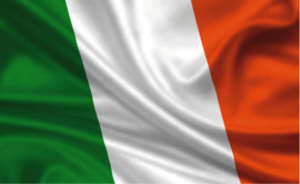
Ireland: Irish Republican Army (IRA)
Global Peace Index:
- Ireland
- Rank: 13 out of 162
- Score: 1.384
- Northern Ireland (Part of U.K)
- Rank: 47 out of 162
- Score: 1.798
Historical development/background:
Late in the 12th century, the Norman invasion of Ireland was the start of English/British involvement in Ireland, which lasted more than 700 years. In 1882, Charles Stewart Parnell formed the Irish Parliamentary Party (IPP). The fundamental goals of the IPP were legislative independence and land reform for Ireland. From this point forward, they made every effort to attain Home Rule through the parliamentary constitutional movement. The Home Rule movement expressed the enduring desire of the Irish to obtain self-government. In 1914, they succeeded winning the Home Rule Act, but it wouldn’t last very long. The Home Rule Act was suspended at the start of the First World War. The Irish Republican Army (IRA) was born out of a hatred for British rule; their main objective was the creation of a unified Ireland under Irish rule.
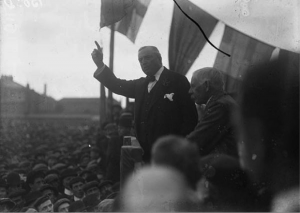 John Redmond, the leader of the Irish Parliamentary Party
John Redmond, the leader of the Irish Parliamentary Party
Organization:
Compared to other terrorist groups, the IRA’s membership has always been fairly small. Even at its peak, the IRA was only estimated at several hundred members that were scattered throughout Ireland in small, underground factions. Daily functions of the IRA were handled by a 7-person Army Council.
Political Activities:
The IRA functioned solely as the paramilitary organization under the political umbrella of Sinn Fein, a political party that has been around since the early 1900s. Since then, Sinn Fein (which in Gaelic translates to We Ourselves) has been the voice of Irish-Catholic Republican pursuits. Under their leadership, the first Irish assembly was declared in 1918. At this time, the IRA was considered the official army of the state. Around the time of The Troubles, Sinn Fein suffered an internal split. As a result, The Workers’ Party of Ireland was created. Sinn Fein has remained a notable power in Irish politics since the 1980s.
Political Backing:
For the span of about 20 years, roughly the 1970s through the 1990s, the IRA benefited from several international connections. They received not only training, but weapons from American sympathizers, Libya and even the Palestine Liberation Organization (PLO). Paintings like the one below are meant to symbolize the common struggle.
Society, culture, and geography:
For many years, The Catholic Church exerted great influence on social and political issues in Ireland. The public often looked to Irish bishops for advice on how to exercise their own political rights. However, this has been in steady decline over the past twenty to thirty years. This is directly associated with not only the decline in interest of Church doctrine of the younger generations, but also with the morality of Church representatives coming into question. The Bishop of Galway, Eamonn Casey, was involved in a vastly publicized scandal. It was discovered that Casey not only had an affair with an American woman, but also fathered a child with her. This of course resulted in his resignation in 1992. In addition, there have also been many allegations of pedophilia and child-abuse amongst Catholic priests. In light of these types of situations, the Irish people began questioning the integrity and efficacy of the Catholic Church, and eventually shut down the Irish embassy at the Vatican.
The island of Ireland is split into two sections. First called the Irish Free State in 1922, southern Ireland would officially become the Republic of Ireland in 1949. Northern Ireland has been, and remains under British rule. This is demonstrated in the map below.
Economy:
Since integrating itself into the global economy, Ireland has created a more refined and diverse economy. In the 1990s, Ireland really expanded from an agriculture only economy. It became a modern industrial economy that produced considerable income for the entire nation. Ireland was producing sophisticated goods that gave competitors a run for their money. This boom earned Ireland the nickname Celtic Tiger.
Modern IRA:
Although the original or official IRA as it existed before the Treaty of 1921, is no longer in existence, the IRA is still around in even smaller, more underground factions. These splinter groups have had various names such as the Continuity Irish Republican Army (CIRA), the Real Irish Republican Army (RIRA), and the Provisional Irish Republican Army (PIRA). In 1998, the long-time struggle between Irish Separatists, Irish Loyalists and the British government came to an end, by way of The Good Friday Agreement (Belfast Agreement). This agreement gave Northern Ireland its current devolved form of government, which meant they had the power to create legislation relevant to them.
Following The Good Friday Agreement, the majority of the existing IRA factions accepted the ceasefire that followed. However, there are still some smaller factions that never accepted the ceasefire or turned in their weapons. These extremists are determined to free Northern Ireland of British rule and bring them under Irish rule, at any cost. While there are many in Northern Ireland (possibly even the majority) that would like to reunify with Ireland, they do not want to go to war.
Resolution (How does it end?):
According to Cronin’s endings, it is my opinion that the IRA has experienced 2 of the 6 patterns of decline. First, negotiation, which came in the form of the Treaty of 1921 and the Good Friday Agreement. Second, I think they are currently experiencing failure, because they have lost most of their public support.
Significant Events Timeline (courtesy of pbs.org):
- April 24-26 1916 – Easter Rising in Dublin – This is led by Patrick Pearse, who proclaims the “Irish Republic.”
- 1920 – 1921 – War of Independence & Partition – Following the Anglo-Irish War (War of Independence) the Government of Ireland Act creates partition. Twenty-six southern counties become the Irish Free State and six northeastern counties–Northern Ireland–remain part of Britain.
- August 12, 1969 – Battle of Bogside (Derry) – The Orange Apprentice Boys of Londonderry hold a parade. Rioting breaks out and 1,000 police arrive to contain the crowd. Bogside marks a pivitol point where the troubles in Ireland move away from civil rights issues and toward religious and national identities. A few days later, the British Army arrives to maintain order.
- December 28, 1969 – Birth of provisionals – The IRA Provisonal Army Council issues a statement which signals the split between the IRA. The Provisionals emerge.
- August 9, 1971 – Internment – Internment is implemented–meaning a person can be locked up without a trial. This move by the British government produces violence and political unrest.
- January 30, 1972 – Bloody Sunday (Londonderry) – During a civil rights march in Derry involving thousands of people, British paratroopers shoot dead thirteen Roman Catholics. (A British inquiry will later exonerate the soldiers,suggesting the demonstrators were terrorists linked to the IRA. Decades later, the British government concedes the demonstrators were innocent; a new investigation is under way in 1999.)
- March 24, 1972 – Direct Rule – As a result of Bloody Sunday, Her Majesty’s Government abolishes Stormont Parliament and introduces Direct Rule from Westminster, “until a political solution to the problems of the province can be worked out.”
- July 21, 1972 – Bloody Friday – The IRA sets off 26 bombs in Belfast killing nine people and injuring 130.
- May 15, 1974 – Sinn Fein Legalized – The Northern Ireland (Emergency Provision) Act of 1973 is amended making the Ulster Volunteer Force and Sinn Fein legal organizations.
- 1974 – 1975 – Cease fire – A truce is reached through secret negiotiations between the Provisional IRA and the British security forces. IRA members believe British withdrawal from Northern Ireland will follow soon.
- December 5, 1975 – Internment Ends – The British government ends internment, declaring those who are guilty of crimes will be charged, arrested, and tried with a jury. During the period of internment nearly 2,000 people were detained without a proper trial.
- March 1, 1976 – Criminalization – The British begin phasing out Special Category status. After this date, all prisoners convicted of terrorist acts are to be treated as ordinary criminals and locked in H-Block.
- September 15, 1976 – Blanket Men (Maze Prison) – Kieran Nugent, Provisional IRA member is the first prisoner convicted and not given Special Category status. He refuses to wear a uniform and wears a blanket to differentiate himself from the Ordinary Decent Criminals (OCDs). This became known as the “Blanket Protest.”
- August 2, 1978 – Dirty Protest (Maze Prison) – Cardinal O’Fiaich visits Maze Prison and protests the unsanitary conditions. Three hundred Republican prisoners refuse to wear prison clothes and demand Special Category status. Protesters wear only blankets and smear the walls in their cells with excreta.
- August 27, 1979 – Mountbatten Assassination – Lord Mountbatten, uncle of Queen Elizabeth II, is murdered along with three others when his boat is blown up by an IRA bomb at Mullaghmore, Co. Sligo.
- October 27, 1980 – First Hunger Strike – Tommy McKearney and six other IRA members start the first prison hunger strike demanding the right to wear their own clothes.
- March 1, 1981 – Second Hunger Strike led by Bobby Sands – Bobby Sands begins a new hunger strike on the fifth anniversary of the ending of Special Category status.
- April 9, 1981 – Sands elected MP – Forty days into his hunger strike, Sands wins the seat for Fermanagh-South Tyrone.
- May 5, 1981 – Bobby Sands dies on 66th day of hunger strike – His death causes rioting in Northern Ireland and in the Republic 100,000 attend his funeral. The next day, provisional IRA prisoner, Joe McDonnell starts a hunger strike to take the place of Sands. Another nine IRA members fast to death.
- November 15, 1985 – Anglo-Irish Agreement – This agreement is signed by Prime Minister Margaret Thatcher and Taoiseach Garret FitzGerald. It establishes an Inter-Governmental Conference to deal with political matters, security, and legal matters and the promotion of cross-border cooperation.
- May 8, 1987 – Deaclan Arthurs, Padraig McKearney and six other IRA members of E. Tyrone Brigade are killed – They are gunned down during an attack by the Special Air Services (SAS) while bombing Loughhall Royal Ulster Constabulary (RUC) station.
- November 1, 1987 – Eksund–Libyan arms – A huge consignment of Libyan arms and ammunition, including surface-to-air missiles, are discovered on board the Eksund. It’s later reported that the IRA had already received three other arms shipments from Libya.
- March 6, 1988 – Gibraltar – Sean Savage, Daniel McCann and Mairead Farrell, unarmed, are gunned down, by SAS. They were active IRA members. Controversy surrounds their deaths because SAS had followed them and allegedly gave no warning before the shootings. SAS claim they feared the three were about to detonate a bomb.
- March 16, 1988 – Milltown cemetery in Belfast – Three mourners are killed by Loyalist gunman Michael Stone during the burial of the three IRA members killed in Gibraltar.
- March 19, 1988 – Two British soldiers are killed – These two soldiers accidentally drive into the funeral procession of Kevin Brady in Andersonstown (he was one of the three IRA victims killed by the Milltown gunman two days earlier.) TV cameras record how the soldiers are dragged from their car, beaten by the crowd, and then shot dead by IRA. The footage is shown around the world.
- January 11, 1988 – SDLP and Sinn Fein Talks – Social Democratic Labor Party leader John Hume and Sinn Fein President Gerry Adams begin discussions for an all-Ireland settlement.
- February 7, 1991 – IRA mortars – The IRA fires a mortar bomb 15 yards from a room where Prime Minister John Major is meeting with his cabinet. No one is injured.
- January 17, 1992 – Teebane Crossroads – Seven Protestant constructions workers at a security base in Co. Tyrone are killed by an IRA bomb. The driver of their bus also dies.
- April 24, 1993 – Bishopsgate bomb – An IRA bomb containing one ton of fertilizer explosives goes off at the NatWest Tower in London. One is killed and 30 are injured. Damages amount to $1 billion.
- October 23, 1993 – Shankhill bomb – IRA detonates a bomb in a Belfast fish shop. Ten people die including one of the bombers; 57 are injured.
- December 15, 1993 – Downing Street Declaration – John Major and Albert Reynolds issue a Joint Declaration on Northern Ireland which says “the ending of divisions can come about only through the agreement and cooperation of the people, North and South, representing both traditions in Ireland.”
- February 1994 – Gerry Adams granted U.S. visa – Sinn Fein leader Adams is finally granted visa to enter the U.S. after being turned down eight times by the Reagan and Bush administrations. President Clinton says he hopes Adams’ visit would help the peace process.
- August 31, 1994 – IRA cessation – The IRA announces that there will be a cessation of military operations in an effort to help the democratic peace process.
- February 1996 – Canary Wharf bomb – The IRA announces the ceasefire will end. Scotland Yard receives warnings that a bomb is planted in the Canary Wharf area. At 7:01 PM a bomb explodes there killing two and injuring over a 100.
- September 15, 1997 – All Party Peace Talks begin – Another IRA ceasefire is established and, for the first time since Ireland was divided in 1922, the Irish Free State, Ulster (British Province) and Sinn Fein, the political wing of the IRA, sit down to formal negotiations.
- October 13, 1997 – British Prime Minister Tony Blair meets with a Sinn Fein delegation and shakes hands with Martin McGuinness and Gerry Adams in East Belfast. Northern Ireland’s Protestant majority are outraged, citing the IRA’s history of violence and continued unwillingness to lay down their weapons.
- December 5, 1997 – A Catholic man is killed outside of Belfast. It’s the first killing since the IRA cease-fire in July. The Loyalist Volunteer Force is suspected.
- January 11, 1998 – On the eve of the peace talks resuming, Terry Enwright, a Roman Catholic doorman at a Belfast night club and nephew of Gerry Adams, is killed. The Loyalist Volunteer Force takes credit.
- January 26, 1998 – After more killings occur totaling seven Catholics and two Protestants, the Ulster Democratic Party leaves the peace talks rather than be expelled when the Ulster Freedom Fighters admit to some of the murders.
- January 29, 1998 – Prime Minister Tony Blair announces a new judicial inquiry into the 1972 “Bloody Sunday” killings in Northern Ireland.
- February 20, 1998 – The Irish and British Governments temporarily expel Sinn Fein from the peace talks for two killings earlier in the month which are linked to the IRA.
- April 10, 1998 – The Good Friday Agreement – After months of peace talks, murders and violence, the Northern Ireland Peace Talks produce a settlement called The Good Friday Agreement.
- May 23, 1998 – A referendum on the historic Good Friday Agreement is voted on in Northern Ireland and the Irish Republic. It passes by 71 percent to 29 percent in Northern Ireland and in the Irish Republic 94 percent approve the compromise agreement.
- August 15, 1998 – Omagh Bombing – 29 people are killed and over 200 wounded when a bomb explodes in Omagh. It is Northern Ireland’s most deadly paramilitary attack. The blast is blamed on the Real IRA, a splinter group from the IRA.
- September 1998 – David Trimble, Northern Ireland’s First Minister, says Sinn Fein should not be seated in Northern Ireland’s new Assembly because the IRA has not disarmed. Sinn Fein’s chief negotiator, Martin McGuiness, says Sinn Fein must be part of the executive in Northern Ireland before the IRA hands over their weapons.
- October 16, 1998 – David Trimble and John Hume win the Nobel Peace Prize for their efforts to bring peace to Northern Ireland.
- December 18, 1998 – First steps in decommissioning terrorist weapons are taken with the handing over of a cache of weapons by the Loyalist Volunteer Force.
- April 2, 1999 – On the first anniversary of the Good Friday Agreement, there is still no deal between the opposing sides. The main issue remains the decommissioning of the IRA’s weapons.
- July 1999 – Significant setbacks occur this month for implementing the peace agreement. The main Protestant politicians, the Ulster Unionists, announce they won’t share power with Sinn Fein in a Protestant-Catholic coalition Cabinet, as envisioned in the peace accord, so long as the IRA refuses to begin disarming. And Sinn Fein rules out IRA disarmament by May 2000 which is the deadline set by the peace accords for the IRA and pro-British Protestant paramilitary groups to surrender all weapons.
Sources of Info:
- Columbia Electronic Encyclopedia
- pbs.org
- Wikipedia
- fas.org
- about.com
- talktank.wordpress.com
Photo Credit:
- Irish Flag – (image courtesy of theinquirer.net)
- John Redmon IPP – (image courtesy of census.nationalarchives.ie)
- PLO/IRA – (image courtesy of markhumphrys.com)
- Map of Ireland – (image courtesy of wordtravels.com)
- CIRA – (image courtesy of trackingterrorism.org)
Years of Lead: Italy 1969-1984
Global Peace Index Rank: 34 out of 162
GPI Score: 1.675
A study of political terrorism in a former fascist country in the context of the Cold War. Extreme right-wing groups fight against extreme left-wing groups.

Post-war Italy was a country of political extremes, with powerful forces on the far right and far left vying for power by increasingly violent means. By the late 1960s, political violence, including riots and assassinations, had become a national crisis. During the 1970s and 1980s, in what Italians called the Years of Lead, the country would be brought to the brink of civil war.
1950s and 1960s: Communists and Former Fascists Compete for Power
Italy after the Second World War was a turbulent place. Due to the looming threat from the Soviet Union, and despite its status as a former fascist country, Italy was quickly integrated into the Western Alliance (NATO) in the early years of the Cold War.
During the 1950s and 1960s, Italian politics became increasingly fractured and tense. As in many Western European countries, former members of fascist political and militant groups had integrated into post-war society and in many cases continued to hold political offices. In some cases, even moderate center-right politicians came from fascist backgrounds. Unlike most Western countries, however, Italy also had a large and independent Communist Party, which often charted a different course than the Soviet-directed Communist parties in other European countries. Unlike in the political landscapes in most Western European countries, Italy’s Communist Party was often seen in Italian domestic politics as a moderate and viable left-wing party.
Whereas the Communist Party occupied the Left of Italian politics, the Right was often made up of former members of Mussolini’s Fascist Party, financed by some of the largest corporations in Italy and supported politically and rhetorically by the Vatican. The Right was also more aligned with the policy of the United States and NATO, and therefore was given preference and patronage by the United States.


1969: Riots and the Piazza Fontana Bombing
By the late 1960s, political unrest had reached fever pitch. Marches by radical left-wing groups were turning into riots, including one in Milan in November 1969 which led to the killing of a police officer. Radical groups also marched on and occupied major factories across the country.

In early December, Rome and Milan were the sites of various small bomb attacks, which were often followed by mass arrests of members of left-wing groups. Responsibility for these attacks was disputed, with many left-wing activists blaming them on right-wing groups.
On December 12th, a massive explosion shook the Piazza Fontana in the center of Milan, killing 17 and wounding 88. Although the bombing, like others before it, was initially blamed on left-wing and anarchist groups, suspicion soon fell on a neo-fascist organization called Ordine Nuovo (“New Order”).

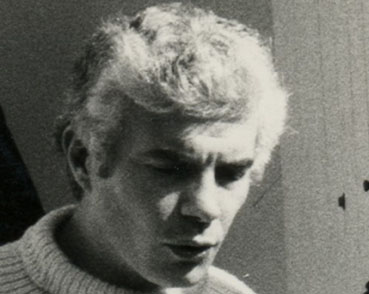
The Early 1970s: Coup Plots, Assassinations and Bombings
The years of 1970 to 1973 were characterized by more bombings and assassinations, as left-wing and right-wing groups both conducted attacks against police and government officials. In 1971, members of the left-wing October 22 Group killed Alessandro Floris, a government official, in Genoa. On May 17, 1972 a police officer was shot and killed by neo-fascists in Milan. Two weeks later, a bomb near the Yugoslav-Italian border killed three Italian police officers in an attack that was also blamed on neo-fascist terrorists.

Perhaps most sinister of all, a plot by hundreds of former fascist soldiers, with assistance from hundreds more active police and military officers, was uncovered in 1971. The plan called for a coup d’etat, during which the President would be kidnapped and crucial government buildings would be stormed and taken over. The plot was dramatically uncovered by the press in March 1971, when it became known that the plotters had been in communication with representatives of the United States intelligence community. The murky relationship between the U.S. and far-right terrorist groups in Italy would have tremendous implications in the years to come.

Strategy of Tension
As the 1970s progressed, bombings and shootings continued. In May 1974, a bombing in Brescia killed eight. In August of that year, a train bombing killed 12 and injured over 100.
As the suspected perpetrators of these bombings (all members of right-wing militant groups) were arrested and put on trial, a pattern began to emerge. Far-right groups were engaging in a systematic attack on the state in order to provoke mass panic and create a sense that the government was losing its ability to maintain peace and security. In what became known as the “Strategy of Tension,” groups led by former members of the Fascist party, both inside and outside the government, attempted to create an atmosphere in which violence and instability would become so unbearable that the state would lose the trust of its people. As the government collapsed, far-right groups would stage a coup to replace the democratically elected government with a resurgent fascist one. The 1974 arrest and trial of the head of the Italian military intelligence agency brought to light the extent to which these groups had penetrated the government.
Gladio: The NATO Connection
Investigations into the militant groups behind the Strategy of Tension led to the uncovering of a secret NATO program known as Gladio. This program, which was set up in the years immediately following the Second World War, consisted of active and former military personnel who, in the event of a Soviet invasion, would operate behind the lines to commit acts of sabotage against Soviet forces. To this effect, arms caches had been hidden in locations across Europe, and retired military personnel had been recruited to take part in the program. Due to its radical nature as what amounted to a suicide mission against the Soviet Union, Gladio had attracted many former members of fascist parties, who had both the training and the fanaticism to take part in such a mission.
While Gladio organizations were quietly disbanded in most NATO countries as time passed, far-right members of the Italian branch used the program, and its arms caches, as a backbone for their attacks against the government.

The logo of NATO’s Operation Gladio. Due to its secretive nature and the fact that it was largely made up of ex-fascist military personnel, it increasingly found itself at the center of conspiracies (real or imagined). As a NATO force, it was all but deactivated by the middle of the Cold War, but because of the shadowy and menacing reputation it gained Gladio would become the focus of ever-more outlandish conspiracy theories over the years.
Enter the Red Brigades

Up until the mid 1970s, far-right groups had been behind the majority of the deadliest and most spectacular terrorist attacks in Italy. Now, a Marxist group known as the Red Brigades (“Brigate Rosse”) began to emerge as a radical student movement. Initially, the Red Brigades (or BR, as it was known by its Italian initials) acted similarly to other far-left groups, occupying factories, sabotaging industrial equipment and attacking members of far-right groups. After the 1974 arrest of its founders, the BR turned increasingly violent, staging multiple bombings, shootings and bank robberies.
The BR quickly developed such a reputation for brutality that other far-left groups began to distance themselves. The Italian Communist Party, in an effort to preserve its own image, went so far as to deny that the BR even existed.
In 1978, however, the BR would stage an unprecedented act of terrorism that would shock the world and bring the Italian government to its knees.
The Kidnapping of Aldo Moro

In Rome on March 16, 1978, a car carrying Aldo Moro, the former Prime Minister of Italy, was stopped and fired upon by members of the Red Brigades. Moro’s five bodyguards were killed and Moro was dragged from the car.
Within an hour, Italian news agencies began receiving calls from members of the BR, announcing the kidnapping. Later that morning, the leader of the Italian congress interrupted the session to announce that Moro had been kidnapped. Italy found itself plunged into a national crisis. In the ultimate nightmare scenario, the former leader of the country was now being held hostage by a terrorist group.
Aldo Moro, member of the center-right Christian Democratic Party and Prime Minister from 1963 to 1968 and again from 1974 to 1976, was one of Italy’s longest-serving postwar prime ministers. Widely respected for his negotiating skills, he engineered in the 1970s what became known as the Historic Compromise. Under his leadership, the Historic Compromise was a power-sharing agreement between the Christian Democratic Party and the Communist Party, and had it worked it may well have eased the left-right tension that had torn Italy apart for years. The deal collapsed as a result of Moro’s kidnapping.
Moro was held hostage for 55 days during which the Italian political establishment was torn between those who wanted to negotiate for his release and those who refused to negotiate with the BR. Throughout this time, the BR released demands and conditions for Moro’s release, as well as letters Moro had written to his family and colleagues from captivity. In late April the Pope made a speech calling for Moro’s release. Throughout the nearly two-month ordeal, the attention of the world was focused on the Italian government and its apparent helplessness in the face of a terrorist group.

Finally, on May 9th, the ordeal ended in tragedy. The BR decided that they had had enough of negotiations with the Italian government. Members of the BR woke Moro, forced him into the trunk of a car, and executed him. Shortly after noon, Moro’s assistant received a call from the BR, informing where Moro’s body could be found.
Footage of the moment authorities discovered Aldo Moro’s corpse.
Aldo Moro’s kidnapping represented a turning point, not only in the history of Italy, but in the history of modern terrorism. No longer did terrorism merely consist of small-scale bombings and shootings in the street. Terrorists had now shown that they could strike directly at the pinnacles of the political establishment.

Bologna Train Station Bombing: Italy’s Darkest Day
The two years following Aldo Moro’s kidnapping were marked by shootings and assassinations. Targets often included journalists, police officers and members of the judiciary. Often, victims had been associated with investigations into various terrorist groups, and the killings were usually done in revenge or to silence witnesses.
On August 2nd, 1980, a bomb exploded in the train station of Bologna, a city which had historically been a base of support for the Socialist and Communist parties. The bomb had been placed in the air-conditioned waiting room of the station, which on that hot summer’s day was packed with commuters and children on their way to summer camp.
The blast, which also blew out buses parked in front of the station and caused parts of the building to collapse, could be heard for miles around. Civilians at the scene were the first to start digging injured survivors out of the rubble, administering aid to the wounded, and carrying away bodies that had been blown onto the train tracks. Being that it was the middle of the summer vacation, hospitals and ambulance services were understaffed and unable to cope with the hundreds of casualties. Emergency responders were forced to use city buses to ferry the wounded to hospitals.
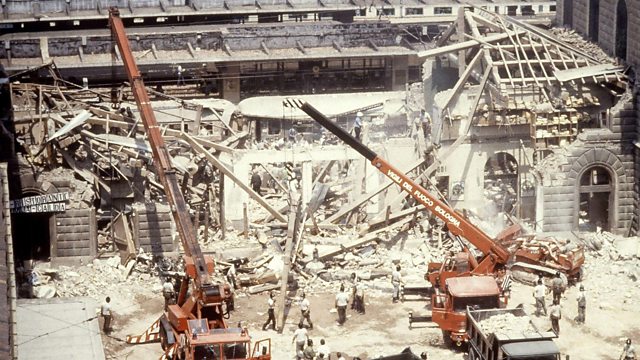
Television coverage of the Bologna Train Station Bombing, which claimed 85 lives and marked the darkest day of the Years of Lead.
Within weeks of the bombing, dozens of members of neo-fascist groups were arrested and put on trial, with several eventually receiving life sentences. The bombing caused outrage in Italian society across the entire political spectrum. The sheer brutality of the attack cost terrorist groups on all sides a great deal of their support, and as a result may have helped bring about an end to the violence that had gripped the country for a decade and a half.
Terrorist Groups Transition to Criminal Gangs
The early 1980s saw a scattering of shootings, mainly of soldiers and police officers. Bank robberies, through which some terrorist groups financed themselves, were also common. This turn away from terrorism and toward common criminality signaled a shift in trends.
In December 1984, two days before Christmas, a bomb exploded on a train near Rome, killing 16 people. In this event however, investigations led to the Mafia, which had absorbed many former members of far-right groups.
Continuing in the second half of the 1980s and through the 1990s, what few hardcore members of Italian terrorist groups were still active and not imprisoned found themselves increasingly sidelined. The Cold War was ending, a new political generation was emerging, and the competing ideologies of fascism and communism rapidly became irrelevant. Some former terrorists, particularly on the far right, joined mafia criminal organizations, while others returned to civilian life. Members of far-left groups returned to the university campuses and labor groups from which they had emerged two decades before.
Conclusion
In the end, neither far-right groups nor far-left groups had the staying power to survive longer than one generation. Terrorists who had once been members of the wartime Fascist party retired, leaving no one to take their place. Groups based around communist ideologies, like the Red Brigades, also fizzled out as the Cold War ended. Cold War politics had provoked and sustained the political violence in Italy during the Years of Lead, pitting Left against Right in an increasingly pointless cycle of bombings and shootings, and by the end neither side remained very relevant.
Terrorist Group Case Studies
On the Left: The Red Brigades
– Motivated by Communist ideology, grew out of violent student and labor movements. Disowned by the mainstream Communist Party due to its use of extreme violence.
– Base of support: labor unions, university campuses, far-left movements.
– Greatest hit: Assassination of Aldo Moro
– Ending: Red Brigades became irrelevant as the Cold War ended. Support dried up as the group’s ideology became increasingly irrelevant and its violent tactics became increasingly distasteful to its supporters.
On the Right: Neo-Fascist Groups
– Collection of far-right groups largely made up of former soldiers from the Fascist era and their supporters. Italy had once been ruled by the Fascist party and many still saw the ideology as a viable counter to Communism.
– Base of support: Business interests, retired and active military officers, far-right political figures, mafia.
– Greatest hit: Bologna Train Station Bombing
– Ending: Far-Right terrorist groups died of old age. As World War Two-era members died or retired, far-right groups lost their base of support. While the far-right cause arguably had, and has, a stronger power base (business, military and political) than the far-left, the specific Fascist ideology gained very little interest from post-war generations.
